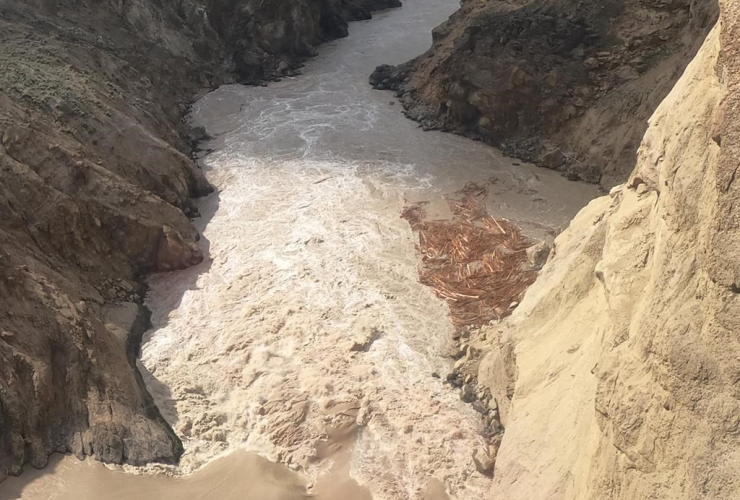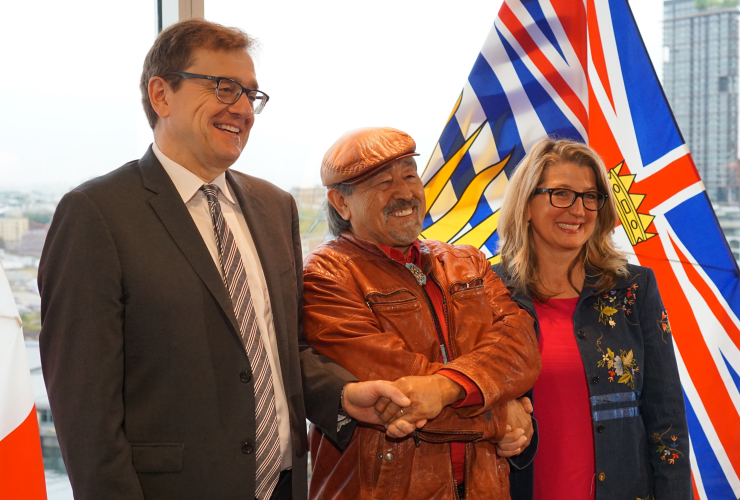A system of pressurized tubes known as a "salmon cannon" is among the options the British Columbia and federal governments are considering to help fish trapped by a rock slide in the Fraser River.
The slide in late June created a five-metre waterfall in a remote area near Big Bar, northwest of Kamloops, and it's blocking the majority of some hundreds of thousands of chinook salmon from migrating upstream to spawn.
Experts from Fisheries and Oceans Canada and provincial ministries have established an incident command post at the site and the governments released a list Monday of the various solutions they're considering.
The options include continuing to use acoustic monitoring and radio tags to track fish passage, moving rocks to create a natural fish access or installing a prefabricated temporary fish passageway or structure.
They're also considering installing a so-called "salmon cannon," which uses flexible pressurized tubes to move fish from below an obstruction to above it, or trapping the fish and transporting them via truck or helicopter.
The governments say each of the options come with potential benefits, risks and possible consequences and are being comprehensively assessed with input from affected First Nations.
"Action will not be taken until rock stability is confirmed and the river bank directly below where the slide occurred is deemed operable," they say in the document released Monday.
Officials are facing a tight timeline to implement a solution as more fish populations are expected to arrive beginning in early August, including a million or more sockeye salmon.
Because of the slide, Fisheries and Oceans Canada announced new restrictions last week for recreational chinook salmon fishing that came into effect Monday. The department said the restrictions were necessary to offset the "potential for permanent loss of these chinook populations."
The restrictions set a maximum size limit of 80 centimetres for chinook salmon that can be caught in areas where recreational fishing is open.





Comments